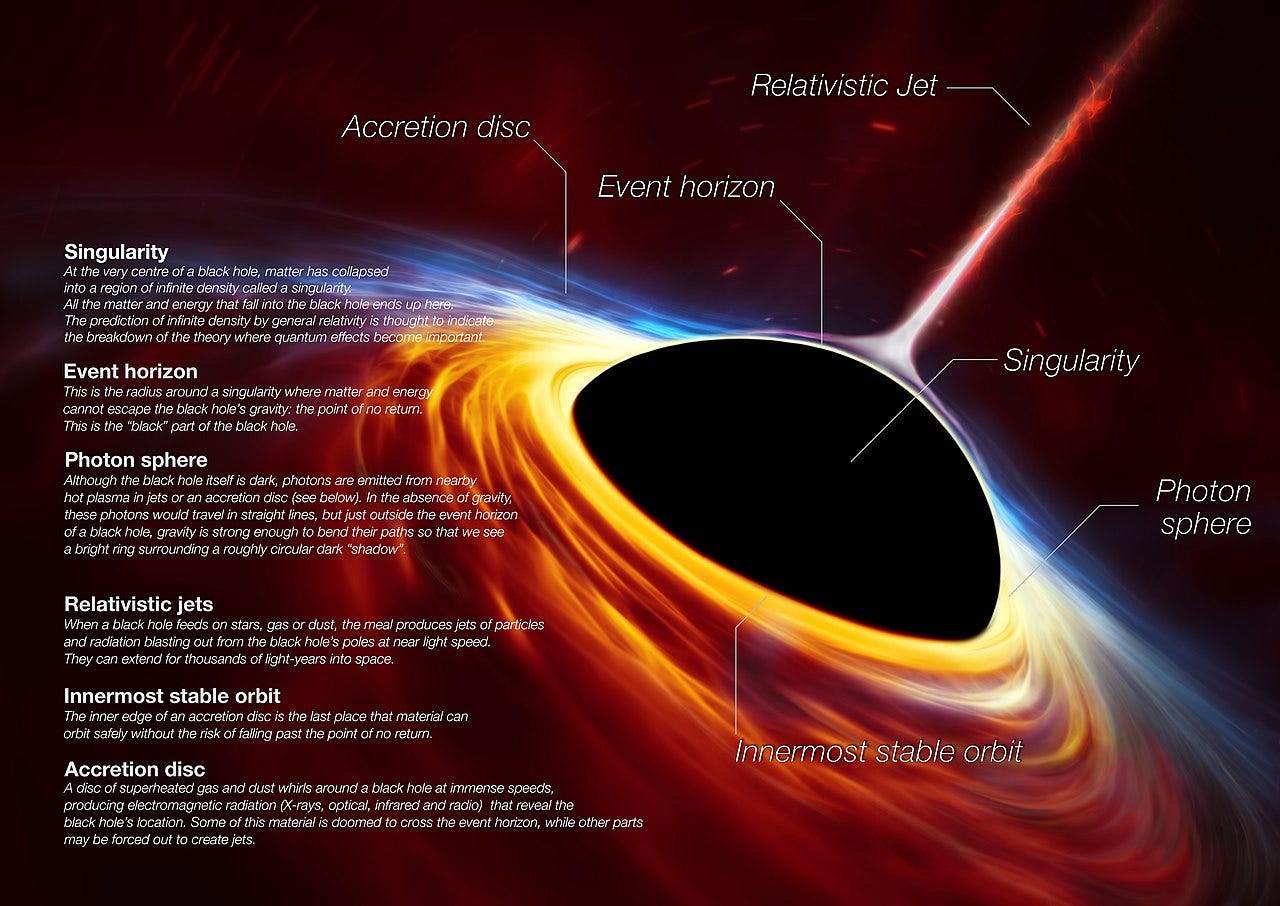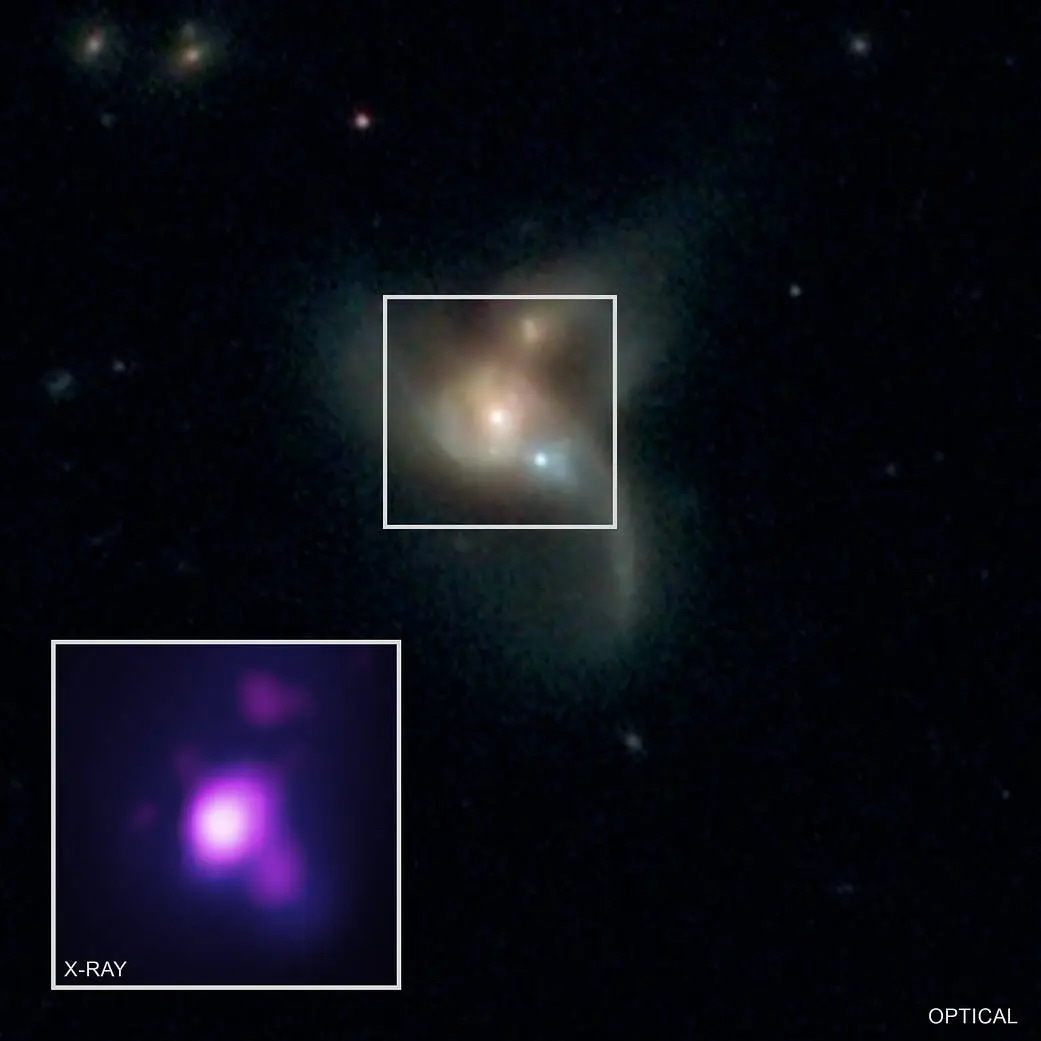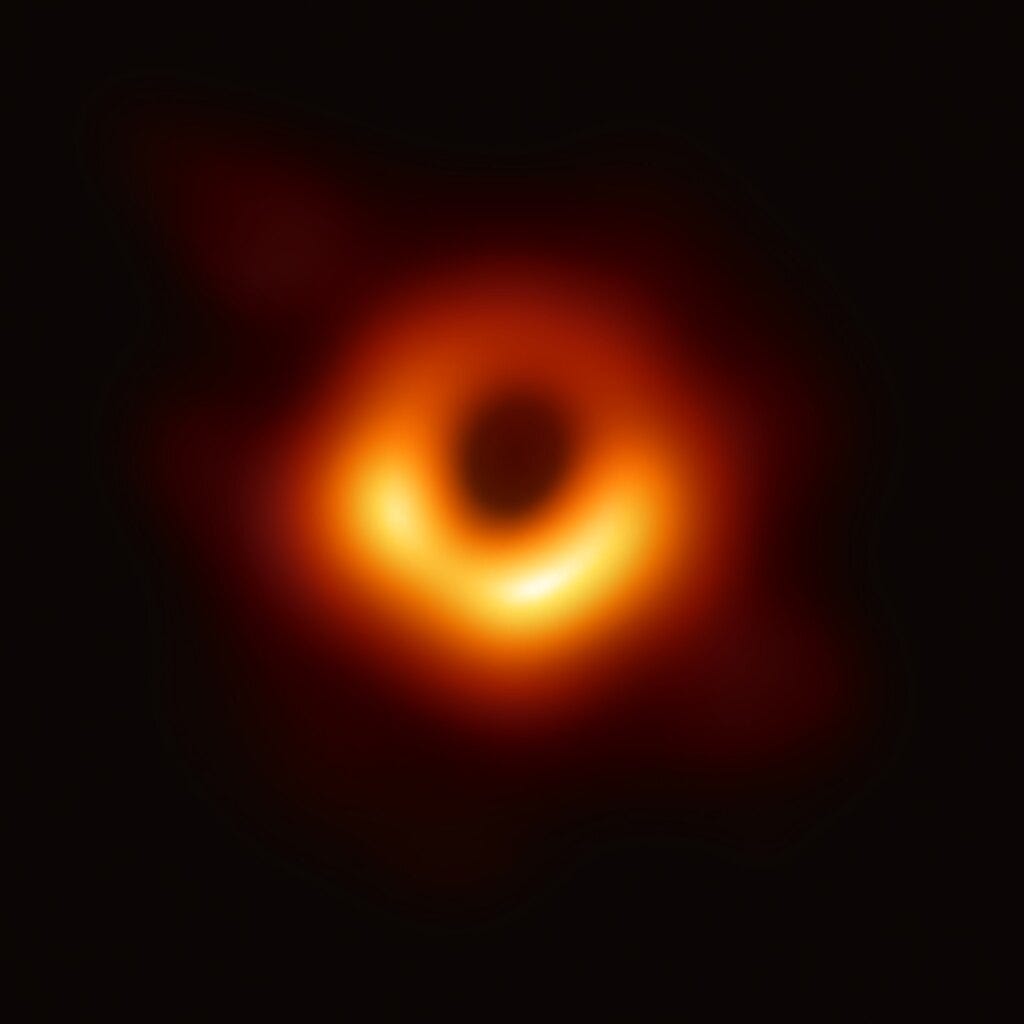Black Holes and Their Unique Systems
Exploring the Mysteries of Black Holes and Their Multi-System Interactions
We are looking for playtesters to play (for FREE) a new card game we are designing based on rockets 🚀. Interested?
Join here (WhatsApp group) or here (discord). You may join both. :)
This article delves into the fascinating world of black holes, explaining their nature and the physics behind their formation. It also explores systems with two and three black holes, their unique features, examples, and the significant implications these discoveries have for our understanding of the cosmos.
What is a Black Hole?
A black hole is a region in space where gravity is so intense that nothing—not even light—can escape its grasp. These enigmatic objects form when massive stars exhaust their nuclear fuel and collapse under their gravitational pull. The result is an incredibly dense core surrounded by an event horizon, a boundary beyond which escape becomes impossible.

Black holes come in different sizes and types:
Stellar Black Holes: Formed from the remnants of massive stars, they typically have masses ranging from a few to dozens of times the Sun’s mass.
Supermassive Black Holes: Found at the centers of galaxies, including our Milky Way, they can have masses equivalent to millions or even billions of Suns.
Intermediate Black Holes: These are relatively rare and have masses between stellar and supermassive black holes.
Primordial Black Holes: Hypothetical small black holes formed in the early universe.
Two-Black Hole Systems
Black holes can sometimes exist in pairs, orbiting each other in a system known as a binary black hole. These systems are fascinating for astrophysicists as they offer a wealth of information about the universe.
How Do Binary Black Hole Systems Form?
Stellar Origins: Binary systems begin with two massive stars. When these stars end their lives as supernovae, they leave behind two black holes that may remain gravitationally bound.
Capture in Dense Environments: In regions like star clusters, black holes can gravitationally capture each other to form binaries.
Key Example: GW150914
A computer simulation shows the collision of two black holes, a tremendously powerful event detected for the first time ever by the Laser Interferometer Gravitational-Wave Observatory, or LIGO. Credits: Listed at the end of video.
This binary black hole system was the first detected by the LIGO observatory in 2015. It consisted of two black holes with masses 36 and 29 times that of the Sun. When these black holes merged, they released gravitational waves, ripples in spacetime that were observed on Earth. This detection confirmed Albert Einstein’s predictions about gravitational waves.
Significance of Two-Black Hole Systems
Testing General Relativity: Binary systems are laboratories for testing Einstein’s theory of general relativity under extreme conditions.
Understanding Black Hole Growth: The mergers of binary black holes contribute to the growth of larger black holes.
Cosmic History: The properties of binary black hole systems provide insights into the life cycles of stars and the dynamics of galaxies.
Three-Black Hole Systems
In rare cases, black holes can form triple systems, where three black holes are gravitationally bound. These systems are even more complex and intriguing.
How Do Triple Black Hole Systems Form?
Triple systems may form in highly dynamic environments like galactic cores or dense star clusters. They are often the result of galaxy mergers, where the supermassive black holes from each galaxy become part of a chaotic, interacting system.
Recent Discoveries: Examples of Three-Black Hole Systems

SDSS J084905.51+111447.2 This triple system, discovered using telescopes like the Very Large Array (VLA), includes three supermassive black holes in a galaxy merger. The closest pair in this system is only about 430 light-years apart, a relatively small distance in cosmic terms.
PG 1302-102 Another system with evidence of multiple black holes, identified through periodic light emissions consistent with orbital motions.
Special Features of Triple Black Hole Systems
Chaotic Interactions: The gravitational interplay between three black holes can lead to complex orbital configurations. In some cases, one black hole may be ejected from the system due to these interactions.
Enhanced Gravitational Wave Emissions: These systems are potential sources of gravitational waves, particularly during mergers.
Unique Relativistic Effects: The proximity of black holes in triple systems amplifies relativistic effects, offering opportunities for groundbreaking studies.
Significance of Triple Black Hole Systems
Galaxy Evolution: These systems are direct evidence of galaxy mergers, a key process in the evolution of galaxies.
Testing Extreme Physics: Triple black hole systems push the boundaries of our understanding of gravitational dynamics and relativistic physics.
Gravitational Wave Astronomy: As potential sources of complex gravitational wave patterns, they enhance our understanding of the universe’s dynamic processes.
Implications for Astrophysics and Future Research
Studying black hole systems, whether binary or triple, has far-reaching implications for astrophysics:
Mapping the Universe: Gravitational wave signals from black hole mergers act as "cosmic beacons," helping map the structure of the universe.
Probing the Dark Universe: Black hole systems may provide indirect evidence for dark matter and other unexplained phenomena.
Technological Advancements: Observing black holes drives innovations in instrumentation and data analysis techniques.
The discovery of multiple black hole systems, particularly triple systems, is a testament to the advanced observational techniques developed in recent years. Instruments like LIGO, Virgo, and upcoming observatories such as the Einstein Telescope (soon be covered in another article of ours) will further uncover the secrets of these cosmic powerhouses.
From single black holes to binary and triple systems, black holes are at the frontier of our quest to understand the universe. Binary systems like GW150914 have revolutionized our understanding of gravitational waves, while triple systems open up new realms of complexity and discovery. Each black hole system we uncover adds another piece to the cosmic puzzle, bringing us closer to grasping the fundamental nature of the universe.



